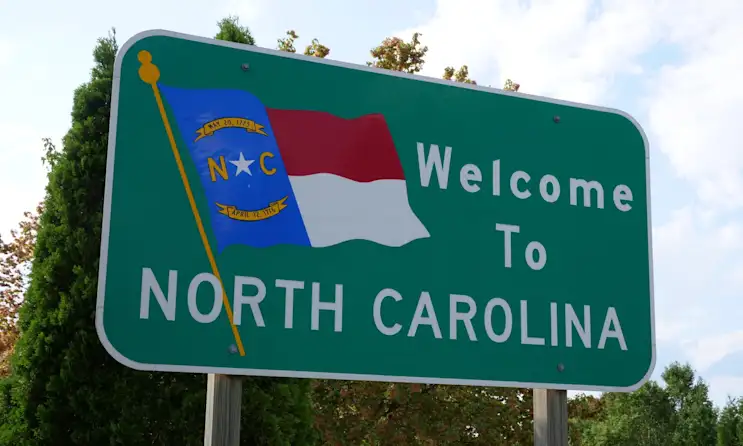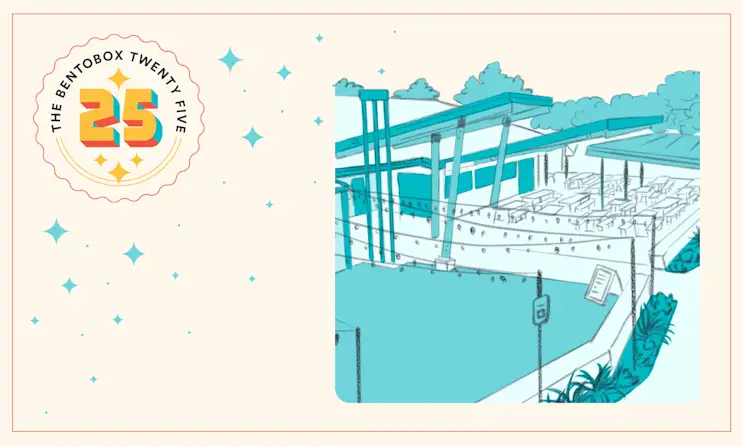Community
The Hospitality Secrets of America's Neighborhood Mainstays
Three restaurants that have served their communities for generations on what it takes to connect with guests and stand the test of time.
There they are, across America: dotted along back roads and nestled into suburbs where generations of locals have known them as part of the landscape. Restaurants that seem to never change, that were beloved go-tos since your grandparents were your age, with names that evoke joyful memories among the families who grew up eating there. There, everywhere you look, are the neighborhood mainstays.
These places are more than restaurants, and more than memories too. They’re inspirations. In an industry that sees one-third of its new openings close within the first year, restaurants that stand the test of time are remarkable. In the best of times, the median age for an independent restaurant is less than five years. The neighborhood mainstay, meanwhile, has been there longer than anyone can remember.
Lodged in the wood and the windows of these restaurants are secrets to success in the hospitality industry. What does it mean to employ a server for more than thirty years? How do you keep your signature dish consistent, decade in and decade out? When change inevitably comes, do you let it change the business? Or do you try to keep things the same?
BentoBox wanted to find out what life is like for these restaurants that seem to stand outside of time. We especially wanted to ask about the role of technology in changing their operations. What emerged were different stories that touch the core of hospitality, and keep dedicated regulars coming back year after year.

PRODUCT
Websites for Restaurants
Get a beautifully designed website with tools to grow your business.
The Bright Star
Bessemer, AL
A family business keeping up with the times.

In the former coal mining town of Bessemer, Alabama, just a few minutes’ drive from downtown Birmingham, The Bright Star has been serving meat-and-threes to local families for more than a century. Founded by Greek immigrant Tom Bonduris in 1907, the restaurant is currently managed by Stacey Craig — the granddaughter of Bonduris’ cousin, who bought the restaurant from Tom in 1925.
Managing the family business was something Craig has always aspired to. “I liked working there growing up,” she told BentoBox. “I was very close with my grandmother and my uncles. I liked that people knew you, I liked working with family. So I kind of knew I wanted to do that.”
Craig attributes the restaurant’s longevity to a unique brand of hospitality that has centered around three primary pillars. First was the exceptionally welcoming and personal connection fostered between staff and customers by Craig’s gregarious uncles, Nick and Jimmy Koikos (pictured in header image). “Jimmy was here pretty much seven days a week, chatting with our guests,” Craig recalls. “It wasn’t work for him.”
It's all relationship-based. That's how a restaurant is successful in the long term.
Stacey Craig
The Bright Star
Second was the quality of the food. The Bright Star is famous for its take on regional cuisine, from seafood — the snapper throats are a particular favorite — to steak, which in 2012 was voted the best in Alabama by the Alabama Cattlemen's Association. The Bright Star was honored with an “America’s Classic” award from the James Beard Foundation in 2010, voted “Alabama’s Best Local Restaurant 2023” by Southern Living magazine, and earned numerous other accolades over the years. “It’s got a big reputation,” Craig acknowledges.

The Bright Star’s famous snapper throats. (Image via AL.com)
More than any of those awards, though, Craig is proud of the way in which the restaurant works with its staff.
“It's a family-oriented business, which means it's not ‘corporately’ run. We're not bottom-line-oriented like a chain would be. If someone gets sick or has to get childcare, we work with them. So we don't have a lot of turnover; we've had cooks and other key positions who have been here 30 years. That’s rare for the restaurant industry. And it helps us maintain consistency.”
With the restaurant’s recent changing of the managerial guard — from the uncles to Craig and her cousin, who currently co-manage the business — technology has been playing a greater role in The Bright Star’s operations.
One notable impact has been the post-COVID decision to swap the physical reservation book for an online system. “It’s helped us be more organized,” Craig reports. “Before it was ‘first come, first serve.’ Now we’ll hold the table for 10–15 minutes. Not only do the guests like it, but it's easier for us to manage parties when we know a firm time they're coming. Now we can plan around a second seating.”
Read More: Which reservation system should you use?
Despite the operational advantages, the online reservation system was met with hesitation from the older generation. “It’s been a big cultural change,” says Craig. One skeptic is Craig’s uncle, who felt he did just fine without reservations for decades. “He’s not entirely wrong. Sometimes older guests come in without a reservation — a lot of times they don’t know how to make one — and they get aggravated when we ask them to wait. But you have to adapt to the times. And I think he gets that this is what most of our customers want. So that’s been one big place we’ve adapted.”

Stacey Craig (pictured here with her grandfather, Bill Koikos) grew up working in the restaurant.
While some things change at The Bright Star, Craig hopes to keep almost everything else the same. She understands how treasured the restaurant is in the community and is drawn to preserving that for her community and her family.
“It's all relationship-based,” she says. “That's how a restaurant is successful in the long term. It’s not transactional. It's relationships.
“We have generations of families who have all dined at the restaurant. And that longevity is simple: you take care of your guests, you take care of your employees. The rest kind of works itself out.”
Buckhorn Exchange
Denver, CO
A slice of Wild West history comes to life.

Stepping through the doors of Buckhorn Exchange (est. 1893) is like walking into a time capsule. Mounted animal heads, vintage photographs, and antique firearms transport visitors to an era when buffalo roamed the plains and the state of Colorado itself was in its infancy. (One of the restaurant’s prized memorabilia is Colorado Liquor License #1.) Presidents, Hollywood legends, and titans of the Old West — from Sitting Bull to “Buffalo Bill” Cody — have all dined at Buckhorn Exchange.
The family of founder Henry H. “Shorty Scout” Zietz sold the restaurant in 1978. But for current GM Anthony Perez, the hospitality of Buckhorn Exchange is something he works hard to maintain every day.
“I try to instill in the staff: I don't care if it's a famous person or a regular person,” Perez told BentoBox. “They should get the same service. I try to make sure that everybody's a VIP here.”
With more than three decades at the restaurant, Perez himself is one of a number of lifelong employees at Buckhorn Exchange. He takes great pride in maintaining the restaurant, and introducing new generations to the unique environment he calls home.
There is also a culinary tradition to uphold here in Denver’s oldest restaurant. The menu has long featured larger-than-life dishes, like an Old West fantasy come to life: exotic game, steak ordered by the pound, and the restaurant’s famous Rocky Mountain oysters. (“You gotta be adventurous!” Perez encourages.)

GM Anthony Perez: “Somebody will say, ‘Oh I notice you didn’t have this,’ and bring a new artifact for us. If we have room, we'll try to fit it in.”
Technology plays as big a role here as you’d expect from a restaurant that used to cash customers’ weekly paychecks in gold.
“We try to hold off on changing things as much as possible,” says Perez. “Of course, you make changes with the times.”
Integrating new into old isn’t always easy. Perez reports that when the restaurant first adopted an online reservation system, “we thought about getting a tablet and putting it in the book” at the host stand where they used to write their reservations, just to try to adhere to expectations. “But it was just so unavoidable.” Today, the host stand displays an iPad proudly.
Eventually, everybody has to catch up with the future.
Fred Pugh
Tony's Baltimore Grill
Other tech advances have come slowly. Until the restaurant got a chip card reader during some COVID-era refurbishments, the staff was using a carbon copy imprint machine to take credit card payments. They’re trying to avoid commissions by staying off of the delivery marketplaces, too, which means customers who want to try “boneless rattlesnake marinated in red chile & lime” or fried alligator tail — “center cut with seafood cocktail sauce” — will have to stop in for themselves, like generations of high plains diners have done before them.
“People keep coming back for the history. Because we don’t change,” states Perez. “We’re not a chain. It’s more family-oriented. With my staff and the ownership, we’re all family.”
Tony’s Baltimore Grill
Atlantic City, NJ
A lifetime of expertise and community.

On world-famous Atlantic Ave, steps away from the boardwalk, sits an establishment every bit as iconic as the casinos that tower over it. Tony’s Baltimore Grill, founded in 1927, calls itself “Atlantic City’s oldest pizza joint.”
Since its founding, Tony’s Baltimore Grill has been one of the town’s most popular spots for pizza and pasta — and originally seafood, though the restaurant moved away from that decades ago. According to Fred Pugh, who worked as the restaurant’s general manager for more than fifty years and became an owner in 2017, the secret to longevity is keeping a good product steady.
“Consistency in this business is the main thing. You don't always have to have the best product, but you have to have a good product — and it has to taste the same even if you come 10 years later. That’s what we’ve been able to accomplish.”

Fred Pugh at Tony’s Baltimore Grill. “Kids come in and love it. They go, “What is that!’ They've never seen a jukebox.”
Pugh remembers vividly the day the restaurant opened its current location in 1966. “They did tremendous business. I’m talking lines until three in the morning on the weekend.” Remarking on what he credits for that success, Pugh says: “The pizza. And the shrimp. And they’re still just as good today.”
Surely helping the restaurant’s cause is the warm welcome Pugh himself has cultivated over the years. Here’s a guy who’s happy to tell you that all of the restaurant’s paneling came from the same California redwood in 1966, when it cost $22 a panel. Pugh is a friendly face who has been remembering other friendly faces for half a century. “Year after year, we have people come in: I couldn’t even tell you their names, but I know they’re gonna order spaghetti & meatballs or sausage pizza. I can tell you what day of the week they’re coming in.”
One challenge of fifty years in the business is to walk the fine line between consistency and stagnation — or worse, stubbornness. Pugh recalls now how the original owners opposed the introduction of modern-day bar food staples like chicken wings, turkey, and (believe it or not) American cheese. (“Other than mozzarella for the pizza, the only kind of cheese they had was Swiss. And that’s a very special type of person who likes Swiss!”) Meanwhile, Pugh knew not to change anything drastic about the restaurant. The jukebox is still full of 45s; the wood paneling is still from that same redwood.

Given that atmosphere, Pugh has adopted technology when it represented a clear way to continue meeting customer habits. The restaurant got its first credit card reader twenty years ago, when “people kept coming in without any cash on them.” The most recent addition has been the development of a delivery business. Once delivery companies started offering to organize logistics, staff, and insurance, Pugh decided to try it. “Now it’s a pretty good business. Eventually everybody has to catch up with the future,” he muses today.
A handful of employees have spent their entire careers at Tony’s. On the managerial front, Pugh says he’s always tried to be open to new ideas from employees. “Every now and then someone comes up with a great idea. Other times I’m the one who has to say, ‘Thank you, but this is just the way we’re gonna do it.’” But people tend to stick around, Pugh says. He’s proud that he never had to rule with an iron fist. “People tend to understand that the manager’s the last person you want to be mad at you.”

PRODUCT
Need more efficient operations?
Streamline processes by integrating all your tools – from front of house to back of house and everything in between.
Sticking to basics
While experimentation has a proud place in the culinary world, there’s a lot to be said for restaurants where people know what to expect — and who they’re going to see — every time they walk in the door. So much restaurant technology strives to synthesize the sense of identity and community that these restaurants have earned through decades of steady service.
“We’ve been through generations of families,” says Fred Pugh. “We started with grandparents and now we’re feeding the grandkids. I made a lot of lifelong friends out of customers here.”
Taking care of employees, too, is a critical component of staying in business for the long haul.
“A lot of what makes The Bright Star special is family,” Stacey Craig told us. “It’s a culture built around caring about your staff: doing the extra things for them: if they need help managing finances or taking care of loved ones or things like that. Our guests have relationships with the servers — we have them that long. So it's kind of a tight knit core group. And we're very fortunate that way.”
Fortunate, sure. Every restaurant could use a bit of luck. But to stick around for as long as these restaurants have, you need to be more than lucky.
Consistency, evolution, customer knowledge, and community: these are the hallmarks of the neighborhood mainstay. You need a strong foundation and steady execution. And you need to care about what you do, every day, and inspire others to do the same. That’s how a restaurant becomes more than a local business, and turns into an experience shared across time.
Header photo of Nick & Jimmy Koikos of The Bright Star via AL.com.

BentoBox Marketing & Commerce Platform
Deliver Smarter Hospitality
Want to stand out online, bring in more money, engage your diners, and streamline operations?
Recommended

Community
How North Carolina Became a Restaurant Powerhouse
June 24, 2024
The Tar Heel State is the nation’s fourth-biggest for new restaurant openings despite being ninth biggest in terms of population. Here’s what’s behind the growth.

The BentoBox 25
Supporting Women in Hospitality with Chef Elena Reygadas
May 14, 2024
Beyond shaping the city’s food scene at restaurants like Rosetta, the CDMX native has been an outspoken advocate for women pursuing culinary careers.

The BentoBox 25
Lewis Barbecue Brings High-Touch Hospitality to Texas BBQ
May 14, 2024
How the Charleston, SC restaurant group brings authentic Texas BBQ to a new environment.

